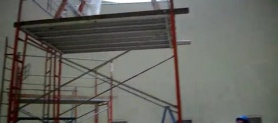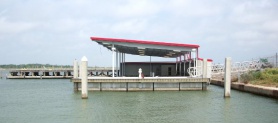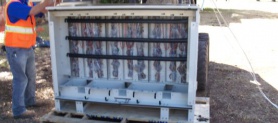HUBZone
Reps and Certs
| FEDERAL CERTIFICATIONS: | SBA CERTIFIED 8(a) Contractor SBA CERTIFIED SMALL DISADVANTAGED BUSINESS (SBD) HUBZone Small Business Concern |
| DUNS NUMBER: 828390182 | CAGE CODE: 57R50 |
| ORCA REGISTERED: Yes | GSA Schedule: N/A |
HUBZone Certification
The Historically Underutilized Business Zones (HUBZone) program helps small businesses in urban and rural communities gain preferential access to federal procurement opportunities. These preferences go to small businesses that obtain HUBZone certification in part by employing staff who live in a HUBZone. The company must also maintain a "principal office" in one of these specially designated areas.
The HUBZone Maps
In order to qualify for the HUBZone program, your business must be located in an area designated as a Historically Underutilized Business (HUB) Zones.
Additional information about the basics of HUBZone requirements can be found on Understanding the HUBZone Program.
SDB Certification
The Small Business Administration’s 8(a) program, named for a section of the Small Business Act, is a business development program created to help small disadvantaged businesses compete in the American economy and access the federal procurement market.
The SBA 8(a) program is designed to benefit the client as well as the contractor by: Allowing small disadvantaged companies the ability to pursue sole-source procurements, Allowing federal agencies the ability to offer “8(a) only” competitive bid procurements, and Ensuring that the 8(a) company is stable and able to handle the workload - SBA does an extensive background check on the company prior to giving it an 8(a) designation.
Through sole source contracts, businesses are given an opportunity to enter the government-contracting arena and gain the experience necessary to compete in the full and open market.
Subcontracting
One of the goals of the 8(a) program is to allow non-8(a) contractors to expand their scope of services. Therefore, the 8(a) contractor is permitted, with approval of the SBA, to subcontract a portion of this work to other qualified firms. While subcontracting is restricted to maintain the integrity of the program as an opportunity for disadvantaged businesses, subcontracting limits can be as high as 85 percent, depending on the industry. Contractors develop valuable relationships, while the client benefits from a qualified, experienced, well-rounded team.
Benefit to Government Customers
- Speed of Process
- Contracts let in 48 Hours
- Team involvement in SOW Development
- Exacting Products & Services
- Flexibility to negotiate Cost Openly
- Contract can reflect customers budget requirements
- Contractor can direct the sub-contractor
- Meets the small-disadvantage requirement
Benefit To Our Vendor Partners
- Speed of process and flexibility
- Contracts awarded before competitive process begins
- Limits cost of securing opportunity
- Reduces risks of investment for development opportunity
- Non protest-able award
- Allow the “Team” to preserve margin
- Allows Prime the ability to meet the small business requirements






